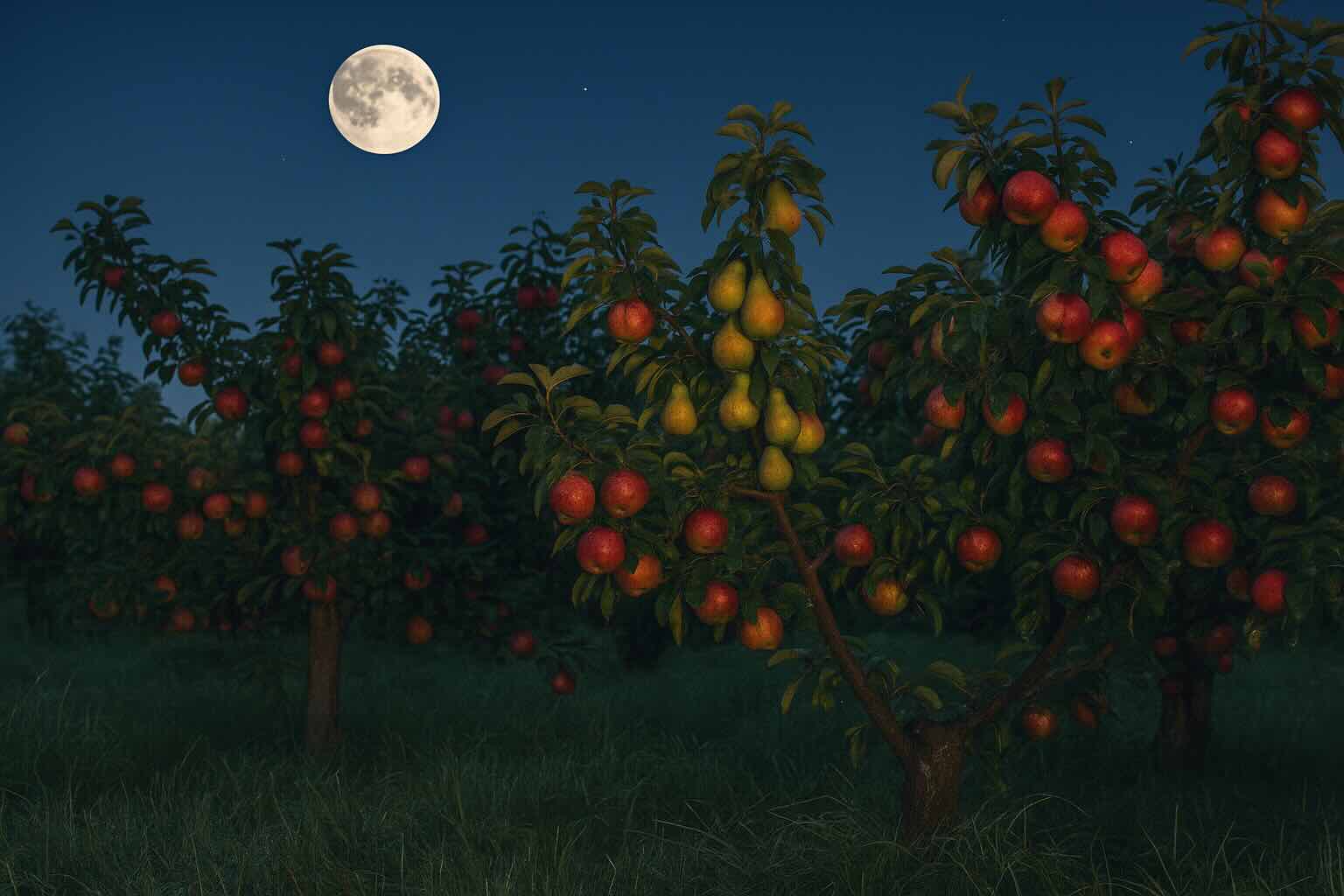Fruit trees are living calendars. Their roots, blossoms, and harvest cycles reflect time and rhythm. For centuries, farmers have looked up to the moon for guidance, believing that its phases shape the success of orchards. In 2025, lunar gardening traditions are making a comeback, as more growers align their planting and pruning with the moon to improve yield and strengthen trees.
The Ancient Connection Between Moon and Orchards
Moon phases have been tied to farming since early civilizations. Just as tides rise and fall under lunar pull, soil moisture and plant sap are thought to respond to the moon’s gravity. While science is still investigating the exact impact, many orchard keepers trust the moon as a natural guide for timing key tasks in fruit tree care.
When applied to orchards, moon gardening suggests that certain phases support growth, while others are better suited for pruning, grafting, or harvesting. This rhythm creates a natural calendar that many gardeners find both effective and grounding.
Waxing Moon: Planting for Upward Growth
The waxing moon—the period between the new moon and the full moon—symbolizes energy moving upward. During this phase, sap flow is believed to rise, nourishing leaves and branches. It’s the best time to plant new fruit trees that bear above the ground.
Apple, peach, and cherry saplings planted during waxing moons often show stronger initial growth. Their energy is directed toward leaves and branches, helping the tree establish its canopy more quickly. This is also a good time for grafting, as higher sap activity helps wounds heal faster and improves graft success rates.
Full Moon: Blossoms and Fertility
The full moon is often associated with abundance and fertility. In orchards, this phase is linked to flowering and pollination. Blossoms appearing under a full moon are said to be more vibrant and longer-lasting. While this is not a time for planting, it is a powerful moment for nurturing.
Orchardists often schedule fertilization during the full moon to give trees an extra boost. It is also a perfect time to water deeply, as increased lunar energy is thought to encourage nutrient uptake. If you enjoy night walks in the garden, the full moon also creates a magical setting to admire blooming trees.
Waning Moon: Root Strength and Grounding
As the moon shifts from full back to new, energy is believed to flow downward into the roots. This waning phase is ideal for planting trees that need strong underground systems or for transplanting young saplings.
Pear, plum, and fig trees planted during waning moons may develop more resilient root structures. It is also the right moment for pruning, since reduced sap flow lowers the risk of excessive bleeding from cuts. Pruning in the waning phase helps shape the tree and strengthens its long-term growth.
New Moon: Rest, Soil, and Planning
The new moon is a quiet phase. With no visible light in the sky, it symbolizes rest and renewal. For fruit trees, this is not the moment for planting, but rather for preparing the soil. Adding compost, adjusting pH levels, and enriching the ground during new moons creates a strong foundation for future planting.
Gardeners also use this time for planning orchard layouts, ordering new trees, or repairing tools. The stillness of the new moon encourages reflection and preparation, setting the stage for growth in the waxing phase.
Scientific Views on Lunar Gardening
Modern science does not fully confirm lunar effects on plants, but it does acknowledge that plants respond to subtle environmental cues. Light, gravity, and moisture cycles all affect growth. The moon’s role may be indirect, shaping patterns of behavior among gardeners themselves. When orchardists follow the lunar calendar, they tend to be more attentive, consistent, and patient—qualities that naturally improve results.
In this sense, lunar gardening may be as much about human rhythm as plant biology. The act of aligning with cycles helps people slow down and observe nature, fostering deeper care for their trees.
Moon Gardening for Fruit Trees in 2025
The year 2025 is filled with notable lunar events, including several supermoons and two lunar eclipses. These moments provide unique opportunities for orchard keepers to align their practices with celestial energy. Many gardeners use eclipses and supermoons as symbolic markers for renewal, pruning, or beginning a new orchard project.
Imagine planting a cherry tree during a supermoon and watching it bloom under the next full cycle. These experiences add meaning to gardening, transforming orchards into living stories connected to the sky above.
Final Thoughts: Rooted in Tradition, Growing into the Future
Whether or not you believe the moon directly influences fruit trees, the practice of lunar gardening creates a rhythm that benefits both plants and people. Apples, pears, peaches, and cherries all have their ideal lunar moment. By aligning care with these phases, you give your trees a structure that mirrors natural cycles.
In 2025, let the moon be your guide. Plant with intention, prune with care, and harvest with gratitude. Your orchard will not just provide fruit—it will connect you to an ancient tradition that celebrates the balance between earth and sky.
